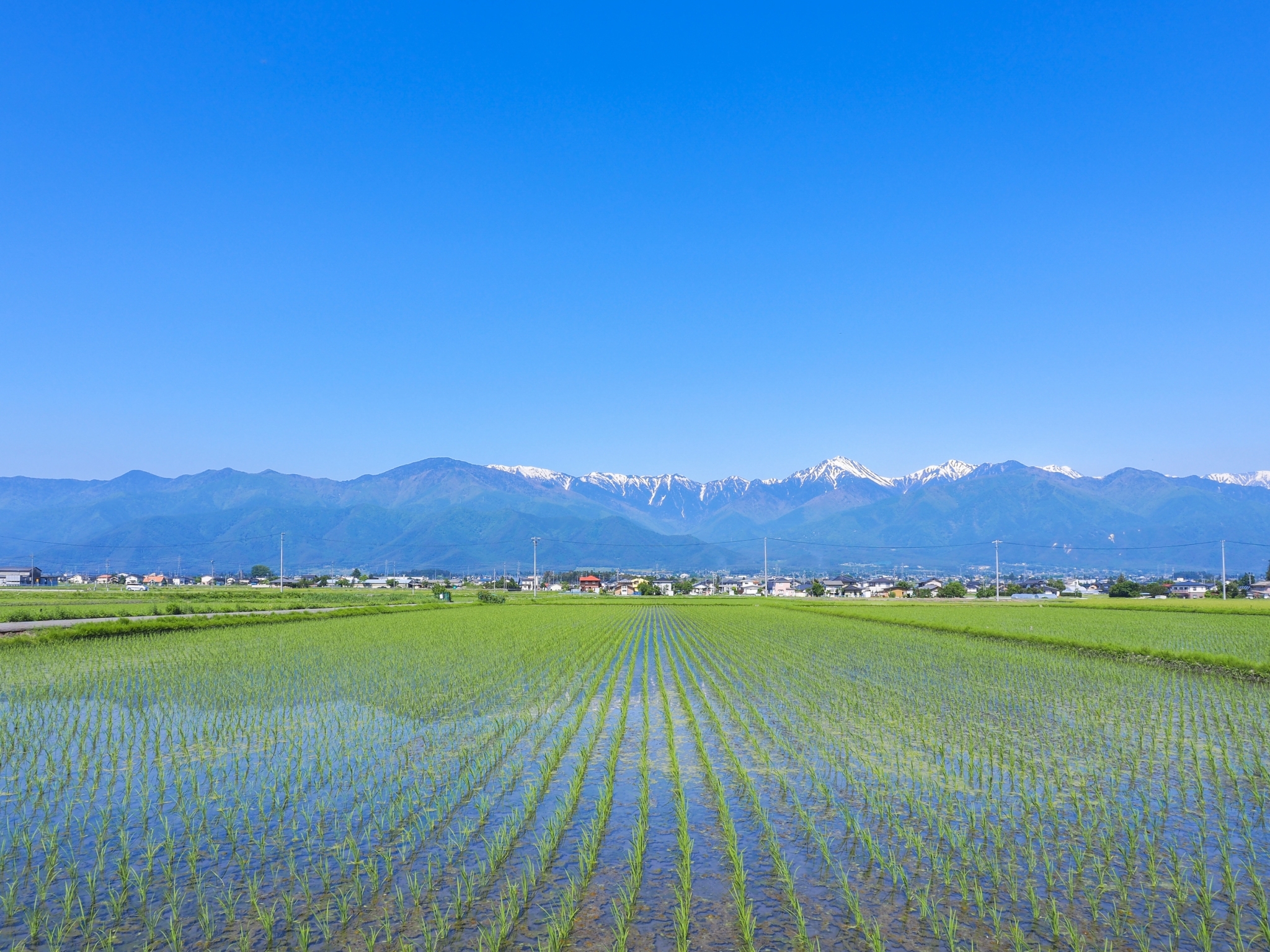
The Saké brewing at EH-shuzô
Brewing process
Hitogokochi and Miyama Nishiki sake rice nurtured in Azumino
Our fine Sakés are making full use of all the advantages of their environment
Raw rice
Most of the raw rice used for Saké brewing is Miyama Nishiki and Hitogokochi, which are only used for Sakés and are from Nagano Prefecture.
Because it takes a lot of time and effort to cultivate it, the farmers who were reluctant to make it have become an indispensable raw material for sake brewing at EH-shuzô.
“We want to brew delicious Sakés with rice having grown in such a breadbasket and blessed by the abundant water of the Azusa river.”
EH-shuzô also uses Yamada Nishiki, “the King of rice for Sakés.” And among the best are those from Yoshikawa town, a unique A district from Hyogo Prefecture. So we carried on negotiations in Hyogo Prefecture with great success!
Due to its limited quantity, Yamada Nishiki is only used for the highest-quality Sakés.
Water for brewing
Azumino, located at the foot of the Northern Alps, is a village known for its mineral water with the “Azumino Wasabi Field Springs,” which was selected as one of the 100 best water.
We use the clean water that rain and snow that fell in the Northern Alps turned into groundwater from a high altitude of 2,500 meters.
Saké brewing
Kôji making
The kôji mold adheres to the Saké rice soaked in the natural water of Azumino and then steamed to make kôji.
Kôji making is a necessary process that influences the quality of sake.
Shubo making
Shubo is grown by adding kôji, steamed rice, water, and yeast.
Kôji converts rice into sugar, and the yeast that produces alcohol from that sugar is raised healthily.
Moromi making
Kôji, steamed rice, and water are added to the shubo three times.
This is the traditional Japanese Saké brewing process called “The three steps of making.” Fermentation takes place over three weeks to 1 month.
Filtration and Storage
After the fermentation period is over, the process of squeezing the moromi and separating it into new Saké and Saké lees is called Jôsô.
Squeezing the Saké at the right time is very important as it will decide its taste.
After Jôsô, new Sakés must undergo heat sterilization through filtration and pasteurization and eventually wait for shipment.
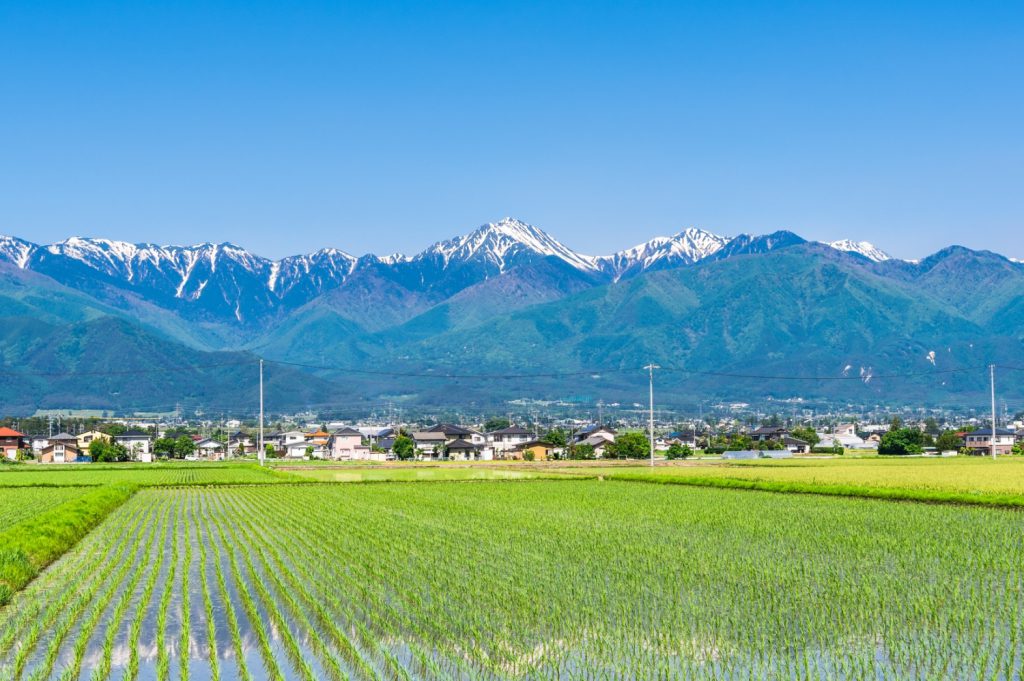

Production process
Production process
Rice washing and Soaking
Washed rice is the foundation for brewing a good Saké. Besides, the time it takes to soak the rice is only a matter of seconds.
In daiginjô brewing, the brown rice is carved to less than 40% of its original size, giving a white-translucent pearl aspect to each little grain called shinpaku, which constitutes the fine lump of starch. The timing of rice washing is strict. It requires washing off the rice bran by hand while paying close attention so that the shinpaku does not crack. The chief brewer counts down while looking at the clock while the brewers are perfectly coordinated despite the tense atmosphere in the washing facility.
After being washed, the rice is soaked in water in a soaking tank. Since rice absorbs water slightly differently each year, the chief brewer determines the optimum amount of water based on past data and years of experience and adjusts the soaking time in seconds. This amount of water absorption determines the quality of the next steamed rice production.
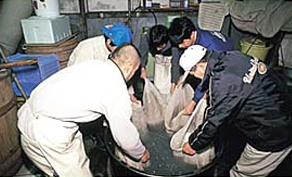
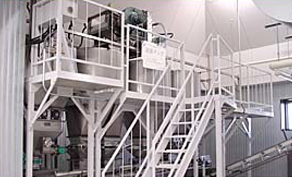
Steaming and Cooling
The ideal steamed rice is “hard outside, soft inside,” a preliminary requirement for making good-quality kôji and shubo.
Once the water is drained from the rice, the latter is steamed in a rice steamer. Furthermore, since the amount of water is adjusted from washing to soaking, the steaming time is almost constant. By boiling, enzymes act on the starch, helping the growth of kôji mold. The ideal form of steamed rice is “hard outside, soft inside,” suitable for Saké brewing.
The finished steamed rice is used to make kôji, shubo, and mash, but if it is too soft, the mycelium of the kôji will wrap around the surface of the rice grains, blocking the yeast from growing as we may think. On the contrary, if the steamed rice is too hard, the sugar of the yeast will not come out, so it is necessary to boil the rice so that it does not melt as soon as the moromi is added.
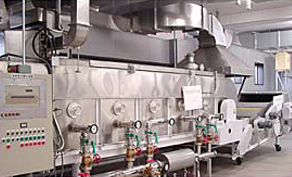
Power: 1,000kg/h
Usage: steam the soaked rice after draining all the water.
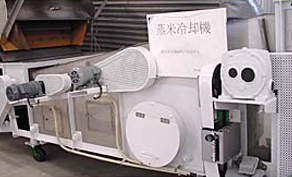
Usage: forced rice cooling by blowing air.
Production of kôji and yeast mash
This process starts with the saccharification of rice starch, then comes the fermentation of moromi. In sake brewing, there is a saying, “First, kôji. Second, the yeast mash. Third, the brewing”. Kôji is made by sprinkling Kôji’s yeast on steamed rice and letting it increase. The success or failure of making kôji dramatically impacts the quality of sake.
Next, the shubo, which results from adding water and yeast to the kôji, is grown in large amounts to ferment the moromi. Shubo, which converts sugar into alcohol, is essential for brewing a good Saké and based on its name in Japanese, it means “mother of Saké.”
Preparation and Fermentation
The decisive factor in the taste is the “three-step preparation.” Moromi is the signature of a brewery.
Adding steamed rice, kôji, and water to shubo to create moromi is a brewing process called “three-step preparation.” Indeed, brewing is usually made in three key steps: additive phase, intermediate phase, and end phase. Between the additive and the middle stages, there is a one-day rest period called “The Dance,” which suppresses the growth of bacteria. Finally, the yeast breeding that constitutes the “three-step preparation” is done in four days:
In the preparation of moromi, the flavor and characteristics of Saké are heavily determined by adjusting the mixing ratio of shubo, steamed rice, kôji, and water, which crystallizes the enthusiasm and commitment of any chief brewer towards Saké brewing.
Fermentation of the finished moromi will be completed in about 20 days and about 40 days at the latest. The raw alcohol is then obtained after squeezing it.
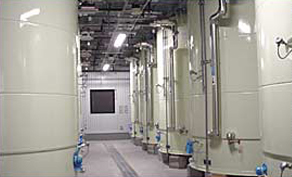
Volume: 9kL
Caution:pour antifreeze into the jacket to cool.Fermentation duration: between 20 and 40 days.
From Jôsô and Filtration to Pasteurization and Bottling
Get drunk with the scent of a freshly squeezed Saké. What a delightful moment!
Here is the final stage of Saké brewing. The process of squeezing the moromi after fermentation and separating it into new Saké (raw sake) and sake lees is called jôsô. Freshly squeezed new Sakés emit a faintly beautiful golden glow and are characterized by their fresh aroma and youthful taste despite being incomplete. In the case of “raw storage,” the sake is quickly put into the bottling process once heated and sterilized. Still, in practice, filtration is done beforehand to remove the odd taste from various ingredients.
In addition, the freshly made alcohol is pasteurized to prevent decay and then poured into a tank to mature. At the end of the stage, the preparation becomes a refined Saké, which can be adjusted by adding the same water as the brewing water used during the previous processes (Sakés that are not changed with water can still be commercialized as raw ones). In the final bottling process, the product is heated and sterilized to ship safe, high-quality products.
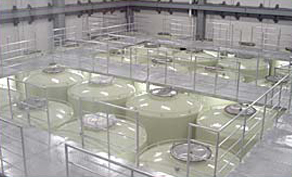
Volume: 7-9kL
Usage: sterilization (at high temperature) and storing (at low temperature).
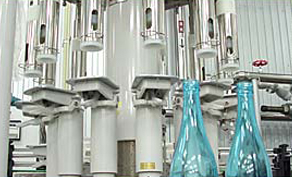
Usage: the very last step of bottling the Saké.
